Africa · Asia · Australia · Bolivia · Chile · China · Europe · Indonesia · Namibia · New Zealand · North America · Oceania · Regions · South Africa · South America · Sweden · USA · Utah · Western Europe · Worldwide
Top 10 places to see the stars
Minimal light pollution, meteors streaking across the sky and the glow of the Milky Way. The dark skies as nature intended are becoming rarer, but as soon as you step out of the luminous cities and into the wilderness, you wont believe your eyes as you take in over 15,000 shimmering fireballs lighting up the sky. So here’s our pick of the best places in the world to stargaze, all of which feature the added bonus of uninterrupted views of our astounding world.
Lake Tekapo, New Zealand
A shimmering turquoise lake flanked by New Zealand’s Southern Alps by day and by night undoubtedly one of the best places in the world to star gaze. With some of the lowest light pollution in the world, gazers can expect perfect conditions to wonder at the Southern Cross and the Southern Star. You may even be lucky enough to see the Aurora Australis, the southern hemispheres answer to the Northern Lights. Hike up to the Mount John Observatory, which overlooks the lake at 1000m, to be rewarded with a magnificent spot to read the skies.
 Uluru, Northern Territory, Australia
As if exploring this natural wonder of the world wasnt enough, plan to stay after dark to experience both the infamous changing of the colours of Uluru at sunset and the sparkling night sky that follows. Tuck into your dinner as an Aboriginal guide points out the constellations, planets and stars, relaying Aboriginal stories of zodiac signs and far away galaxies.
Uluru, Northern Territory, Australia
As if exploring this natural wonder of the world wasnt enough, plan to stay after dark to experience both the infamous changing of the colours of Uluru at sunset and the sparkling night sky that follows. Tuck into your dinner as an Aboriginal guide points out the constellations, planets and stars, relaying Aboriginal stories of zodiac signs and far away galaxies.
 Mt Bromo, Indonesia
Whilst many head to Mount Bromo to witness the out-of-this-world sunrise, it’s well worth getting there in the early hours to see Mars and Jupiter rise over the peaks just before the sun follows. With amazing views below as mountain tops peek through the clouds underneath, above, the Milky Way is framed by stellar clouds. Throughout the night, the sky transforms from a dark sky speckled with purple cosmic dust, to a glowing orange as the sun rises to frame the surrounding volcanoes.
Mt Bromo, Indonesia
Whilst many head to Mount Bromo to witness the out-of-this-world sunrise, it’s well worth getting there in the early hours to see Mars and Jupiter rise over the peaks just before the sun follows. With amazing views below as mountain tops peek through the clouds underneath, above, the Milky Way is framed by stellar clouds. Throughout the night, the sky transforms from a dark sky speckled with purple cosmic dust, to a glowing orange as the sun rises to frame the surrounding volcanoes.
 Salar De Uyuni, Bolivia
Step into the place where perspective does not exist to see one of the most breath-taking views on earth. In the rainy season from December to April, the worlds biggest salt lake becomes the worlds biggest mirror, with the sky and ground becoming one as the horizon disappears. Take the time to stay overnight to see the stars take centre stage on the mirror – you’ll feel like you’re floating through space on this astonishing natural illusion.
Salar De Uyuni, Bolivia
Step into the place where perspective does not exist to see one of the most breath-taking views on earth. In the rainy season from December to April, the worlds biggest salt lake becomes the worlds biggest mirror, with the sky and ground becoming one as the horizon disappears. Take the time to stay overnight to see the stars take centre stage on the mirror – you’ll feel like you’re floating through space on this astonishing natural illusion.
 Natural Bridges National Monument, Utah, USA
The curious natural phenomenon of the Owachomo Bridge, where thousands of years ago a river changed course to carve out a hole through solid rock, acts as a picture frame for more than 15,000 stars. Thats approximately 14,500 more than can be seen in the whole of an urban night sky. The pinky purple hues of the Milky Way overhead contrast the dark canyon wallspainting a magnificent Mars-like scene. Star parties and other stargazing events take place here on a regular basis for all like-minded enthusiasts.
Natural Bridges National Monument, Utah, USA
The curious natural phenomenon of the Owachomo Bridge, where thousands of years ago a river changed course to carve out a hole through solid rock, acts as a picture frame for more than 15,000 stars. Thats approximately 14,500 more than can be seen in the whole of an urban night sky. The pinky purple hues of the Milky Way overhead contrast the dark canyon wallspainting a magnificent Mars-like scene. Star parties and other stargazing events take place here on a regular basis for all like-minded enthusiasts.
 Kruger National Park, South Africa
Why not combine spying the Big 5 with spotting the Big Dipper? For a celestial safari, head to South Africa. After all, you’re more likely to see the animals in their natural habitat by night, and what better way to do so than by starlight. Krugers flat savannah and bushveld are excellent terrains for training binoculars on the rings of Saturn and the Scorpio zodiac constellation, and whats more, many lodges offer the chance to sleep outside in treehouses, enabling you to drift off to the sounds of the bush whilst you watch the shooting stars through your sleepy eyes.
Kruger National Park, South Africa
Why not combine spying the Big 5 with spotting the Big Dipper? For a celestial safari, head to South Africa. After all, you’re more likely to see the animals in their natural habitat by night, and what better way to do so than by starlight. Krugers flat savannah and bushveld are excellent terrains for training binoculars on the rings of Saturn and the Scorpio zodiac constellation, and whats more, many lodges offer the chance to sleep outside in treehouses, enabling you to drift off to the sounds of the bush whilst you watch the shooting stars through your sleepy eyes.
 Atacama Desert, Chile
The worlds highest and driest desert provides perfect star-gazing conditions with high altitude, few clouds and virtually no radio interference or light pollution. Chiles laws against excessive light pollution stems from the belief that darkness is part of their national heritage. Stargazing in Chile offers a contrasting perspective from the rest of the world because instead of studying the stars themselves, the Incas believed that the dark spaces between held more meaning. Local guides will help you to see the head of a snake under the Southern Cross as well as the piercing eyes of a mother llama with her child. You wont be able to think of wishes quick enough to keep up with the spectacular shooting stars.
Atacama Desert, Chile
The worlds highest and driest desert provides perfect star-gazing conditions with high altitude, few clouds and virtually no radio interference or light pollution. Chiles laws against excessive light pollution stems from the belief that darkness is part of their national heritage. Stargazing in Chile offers a contrasting perspective from the rest of the world because instead of studying the stars themselves, the Incas believed that the dark spaces between held more meaning. Local guides will help you to see the head of a snake under the Southern Cross as well as the piercing eyes of a mother llama with her child. You wont be able to think of wishes quick enough to keep up with the spectacular shooting stars.
 Namib Desert, Namibia
Watching the star-studded sky from the Namib Desert is bound to make you feel small. With flat terrain in what is thought to be the worlds oldest desert, this unforgiving landscape has 360 degree panoramic views and unobstructed vistas of the universe stretching far above. The location of the NamibRand Nature Reserve on the eastern edge of the Namib Desert is in the perfect location to spot the red supergiant star, Antares, which is 550 times bigger than our own sun. What a way to get to grips with the scale of our existence.
Namib Desert, Namibia
Watching the star-studded sky from the Namib Desert is bound to make you feel small. With flat terrain in what is thought to be the worlds oldest desert, this unforgiving landscape has 360 degree panoramic views and unobstructed vistas of the universe stretching far above. The location of the NamibRand Nature Reserve on the eastern edge of the Namib Desert is in the perfect location to spot the red supergiant star, Antares, which is 550 times bigger than our own sun. What a way to get to grips with the scale of our existence.
 Kiruna, Sweden
Nestled in the unspoiled Lapland territory, the old mining town of Kiruna is 120 miles north of the Arctic Circle making it one of the best places in the world to see the Aurora Borealis. With the perpetual darkness of December and January, these are the best months to make the most of the nocturnal beauty of the clear skies. Home to the Esrange Space Centre, the area also offers all-encompassing adventures on dog-sleds and sleighs.
Kiruna, Sweden
Nestled in the unspoiled Lapland territory, the old mining town of Kiruna is 120 miles north of the Arctic Circle making it one of the best places in the world to see the Aurora Borealis. With the perpetual darkness of December and January, these are the best months to make the most of the nocturnal beauty of the clear skies. Home to the Esrange Space Centre, the area also offers all-encompassing adventures on dog-sleds and sleighs.
 Yangtze River Valley, China
Surprisingly, there is a place in China tucked away from the big cities with skies clear enough to stargaze, the Yangtze River Valley. The dramatic home to the Three Gorges Dam has stunning daytime backdrops and first-class spots to gaze into space. China has a rich history of stargazing with one of the worlds earliest recorded observatories built in Beijing during the Ming dynasty in the 15th century. Their calendar is based on movements of the moon, so we trust they know what they’re talking about.
Yangtze River Valley, China
Surprisingly, there is a place in China tucked away from the big cities with skies clear enough to stargaze, the Yangtze River Valley. The dramatic home to the Three Gorges Dam has stunning daytime backdrops and first-class spots to gaze into space. China has a rich history of stargazing with one of the worlds earliest recorded observatories built in Beijing during the Ming dynasty in the 15th century. Their calendar is based on movements of the moon, so we trust they know what they’re talking about.
 Tom Marchant is Co-founder of Black Tomato.
If you would like to be a guest blogger on A Luxury Travel Blog in order to raise your profile, please contact us.
Tom Marchant is Co-founder of Black Tomato.
If you would like to be a guest blogger on A Luxury Travel Blog in order to raise your profile, please contact us.
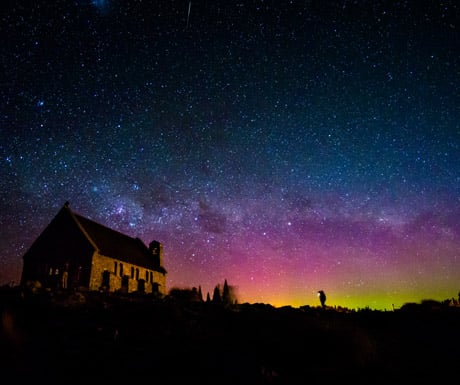 Uluru, Northern Territory, Australia
As if exploring this natural wonder of the world wasnt enough, plan to stay after dark to experience both the infamous changing of the colours of Uluru at sunset and the sparkling night sky that follows. Tuck into your dinner as an Aboriginal guide points out the constellations, planets and stars, relaying Aboriginal stories of zodiac signs and far away galaxies.
Uluru, Northern Territory, Australia
As if exploring this natural wonder of the world wasnt enough, plan to stay after dark to experience both the infamous changing of the colours of Uluru at sunset and the sparkling night sky that follows. Tuck into your dinner as an Aboriginal guide points out the constellations, planets and stars, relaying Aboriginal stories of zodiac signs and far away galaxies.
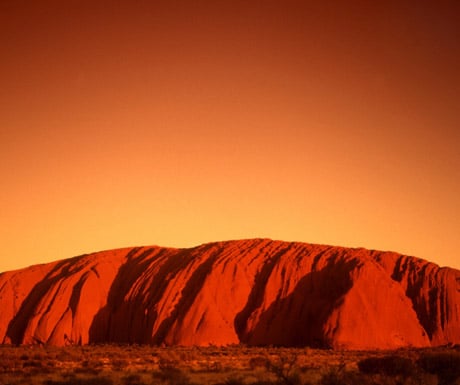 Mt Bromo, Indonesia
Whilst many head to Mount Bromo to witness the out-of-this-world sunrise, it’s well worth getting there in the early hours to see Mars and Jupiter rise over the peaks just before the sun follows. With amazing views below as mountain tops peek through the clouds underneath, above, the Milky Way is framed by stellar clouds. Throughout the night, the sky transforms from a dark sky speckled with purple cosmic dust, to a glowing orange as the sun rises to frame the surrounding volcanoes.
Mt Bromo, Indonesia
Whilst many head to Mount Bromo to witness the out-of-this-world sunrise, it’s well worth getting there in the early hours to see Mars and Jupiter rise over the peaks just before the sun follows. With amazing views below as mountain tops peek through the clouds underneath, above, the Milky Way is framed by stellar clouds. Throughout the night, the sky transforms from a dark sky speckled with purple cosmic dust, to a glowing orange as the sun rises to frame the surrounding volcanoes.
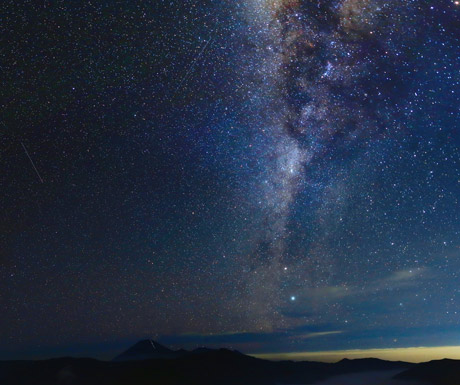 Salar De Uyuni, Bolivia
Step into the place where perspective does not exist to see one of the most breath-taking views on earth. In the rainy season from December to April, the worlds biggest salt lake becomes the worlds biggest mirror, with the sky and ground becoming one as the horizon disappears. Take the time to stay overnight to see the stars take centre stage on the mirror – you’ll feel like you’re floating through space on this astonishing natural illusion.
Salar De Uyuni, Bolivia
Step into the place where perspective does not exist to see one of the most breath-taking views on earth. In the rainy season from December to April, the worlds biggest salt lake becomes the worlds biggest mirror, with the sky and ground becoming one as the horizon disappears. Take the time to stay overnight to see the stars take centre stage on the mirror – you’ll feel like you’re floating through space on this astonishing natural illusion.
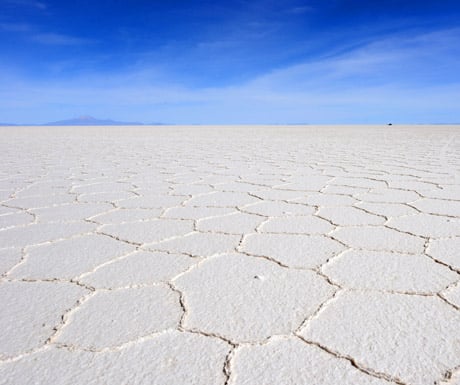 Natural Bridges National Monument, Utah, USA
The curious natural phenomenon of the Owachomo Bridge, where thousands of years ago a river changed course to carve out a hole through solid rock, acts as a picture frame for more than 15,000 stars. Thats approximately 14,500 more than can be seen in the whole of an urban night sky. The pinky purple hues of the Milky Way overhead contrast the dark canyon wallspainting a magnificent Mars-like scene. Star parties and other stargazing events take place here on a regular basis for all like-minded enthusiasts.
Natural Bridges National Monument, Utah, USA
The curious natural phenomenon of the Owachomo Bridge, where thousands of years ago a river changed course to carve out a hole through solid rock, acts as a picture frame for more than 15,000 stars. Thats approximately 14,500 more than can be seen in the whole of an urban night sky. The pinky purple hues of the Milky Way overhead contrast the dark canyon wallspainting a magnificent Mars-like scene. Star parties and other stargazing events take place here on a regular basis for all like-minded enthusiasts.
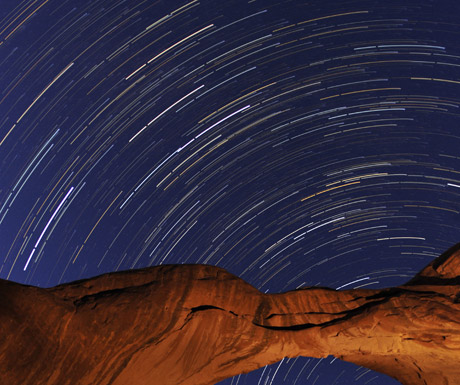 Kruger National Park, South Africa
Why not combine spying the Big 5 with spotting the Big Dipper? For a celestial safari, head to South Africa. After all, you’re more likely to see the animals in their natural habitat by night, and what better way to do so than by starlight. Krugers flat savannah and bushveld are excellent terrains for training binoculars on the rings of Saturn and the Scorpio zodiac constellation, and whats more, many lodges offer the chance to sleep outside in treehouses, enabling you to drift off to the sounds of the bush whilst you watch the shooting stars through your sleepy eyes.
Kruger National Park, South Africa
Why not combine spying the Big 5 with spotting the Big Dipper? For a celestial safari, head to South Africa. After all, you’re more likely to see the animals in their natural habitat by night, and what better way to do so than by starlight. Krugers flat savannah and bushveld are excellent terrains for training binoculars on the rings of Saturn and the Scorpio zodiac constellation, and whats more, many lodges offer the chance to sleep outside in treehouses, enabling you to drift off to the sounds of the bush whilst you watch the shooting stars through your sleepy eyes.
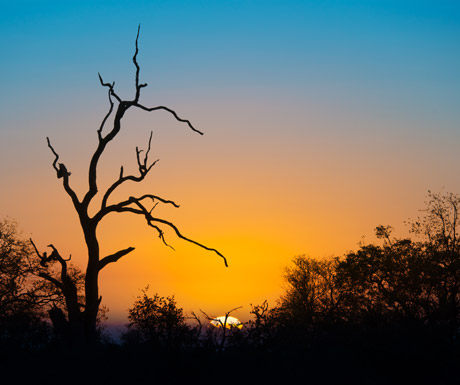 Atacama Desert, Chile
The worlds highest and driest desert provides perfect star-gazing conditions with high altitude, few clouds and virtually no radio interference or light pollution. Chiles laws against excessive light pollution stems from the belief that darkness is part of their national heritage. Stargazing in Chile offers a contrasting perspective from the rest of the world because instead of studying the stars themselves, the Incas believed that the dark spaces between held more meaning. Local guides will help you to see the head of a snake under the Southern Cross as well as the piercing eyes of a mother llama with her child. You wont be able to think of wishes quick enough to keep up with the spectacular shooting stars.
Atacama Desert, Chile
The worlds highest and driest desert provides perfect star-gazing conditions with high altitude, few clouds and virtually no radio interference or light pollution. Chiles laws against excessive light pollution stems from the belief that darkness is part of their national heritage. Stargazing in Chile offers a contrasting perspective from the rest of the world because instead of studying the stars themselves, the Incas believed that the dark spaces between held more meaning. Local guides will help you to see the head of a snake under the Southern Cross as well as the piercing eyes of a mother llama with her child. You wont be able to think of wishes quick enough to keep up with the spectacular shooting stars.
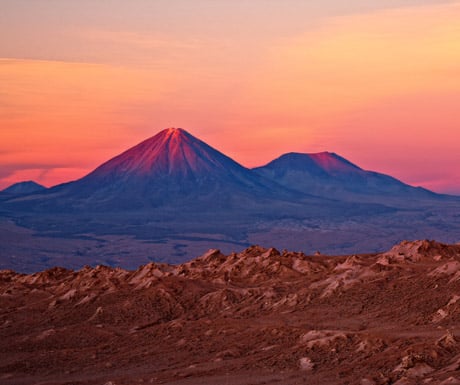 Namib Desert, Namibia
Watching the star-studded sky from the Namib Desert is bound to make you feel small. With flat terrain in what is thought to be the worlds oldest desert, this unforgiving landscape has 360 degree panoramic views and unobstructed vistas of the universe stretching far above. The location of the NamibRand Nature Reserve on the eastern edge of the Namib Desert is in the perfect location to spot the red supergiant star, Antares, which is 550 times bigger than our own sun. What a way to get to grips with the scale of our existence.
Namib Desert, Namibia
Watching the star-studded sky from the Namib Desert is bound to make you feel small. With flat terrain in what is thought to be the worlds oldest desert, this unforgiving landscape has 360 degree panoramic views and unobstructed vistas of the universe stretching far above. The location of the NamibRand Nature Reserve on the eastern edge of the Namib Desert is in the perfect location to spot the red supergiant star, Antares, which is 550 times bigger than our own sun. What a way to get to grips with the scale of our existence.
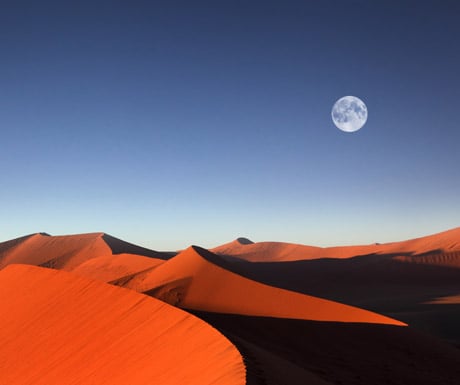 Kiruna, Sweden
Nestled in the unspoiled Lapland territory, the old mining town of Kiruna is 120 miles north of the Arctic Circle making it one of the best places in the world to see the Aurora Borealis. With the perpetual darkness of December and January, these are the best months to make the most of the nocturnal beauty of the clear skies. Home to the Esrange Space Centre, the area also offers all-encompassing adventures on dog-sleds and sleighs.
Kiruna, Sweden
Nestled in the unspoiled Lapland territory, the old mining town of Kiruna is 120 miles north of the Arctic Circle making it one of the best places in the world to see the Aurora Borealis. With the perpetual darkness of December and January, these are the best months to make the most of the nocturnal beauty of the clear skies. Home to the Esrange Space Centre, the area also offers all-encompassing adventures on dog-sleds and sleighs.
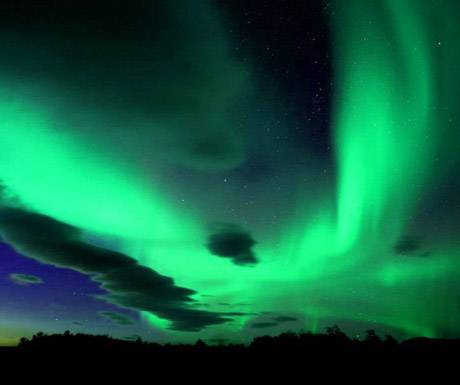 Yangtze River Valley, China
Surprisingly, there is a place in China tucked away from the big cities with skies clear enough to stargaze, the Yangtze River Valley. The dramatic home to the Three Gorges Dam has stunning daytime backdrops and first-class spots to gaze into space. China has a rich history of stargazing with one of the worlds earliest recorded observatories built in Beijing during the Ming dynasty in the 15th century. Their calendar is based on movements of the moon, so we trust they know what they’re talking about.
Yangtze River Valley, China
Surprisingly, there is a place in China tucked away from the big cities with skies clear enough to stargaze, the Yangtze River Valley. The dramatic home to the Three Gorges Dam has stunning daytime backdrops and first-class spots to gaze into space. China has a rich history of stargazing with one of the worlds earliest recorded observatories built in Beijing during the Ming dynasty in the 15th century. Their calendar is based on movements of the moon, so we trust they know what they’re talking about.
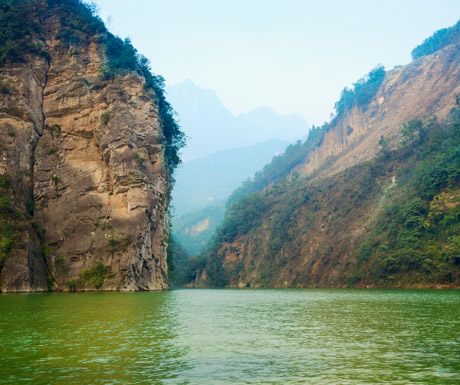 Tom Marchant is Co-founder of Black Tomato.
If you would like to be a guest blogger on A Luxury Travel Blog in order to raise your profile, please contact us.
Tom Marchant is Co-founder of Black Tomato.
If you would like to be a guest blogger on A Luxury Travel Blog in order to raise your profile, please contact us.Did you enjoy this article?
Receive similar content direct to your inbox.


Lovely collection of places. The only one I would possibly contest would be to replace Kruger Park in South Africa with Sutherland in the Karoo.
I would also add Fraser Island, Queensland, Australia. It’s the world’s largest sand island and absolutely beautiful in the dark.
After travelling around Australia, and going to uluru, the most shooting stars I saw was actually on Fraser Island. We went star gazing one night and counted 21 just within an hour!! I knew people that saw them in the Northern Territory but for me, Fraser Island is the place to go in Australia to star gaze
Those places in Africa aren’t reliable – late summer before the rains (ie, now), farmers light fires to burn old grass to get better grass from the rains. Entire countries are filled with smoke worse than LA on a bad day. Was just in Botswana/Zambia/South Africa and visibility was horrendous due to all the smoke from the fires.